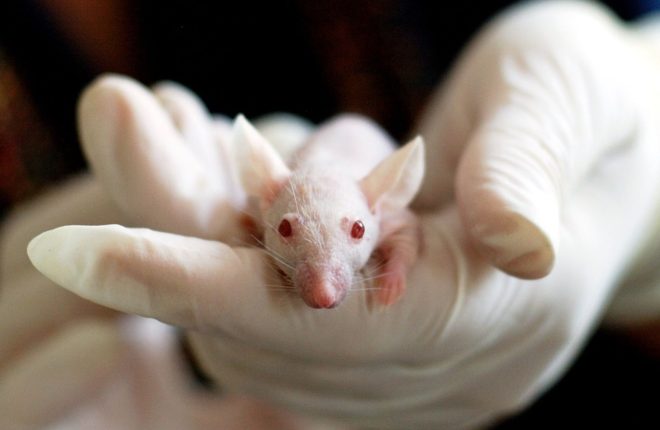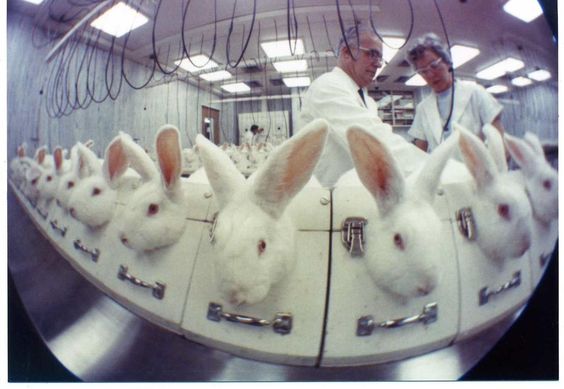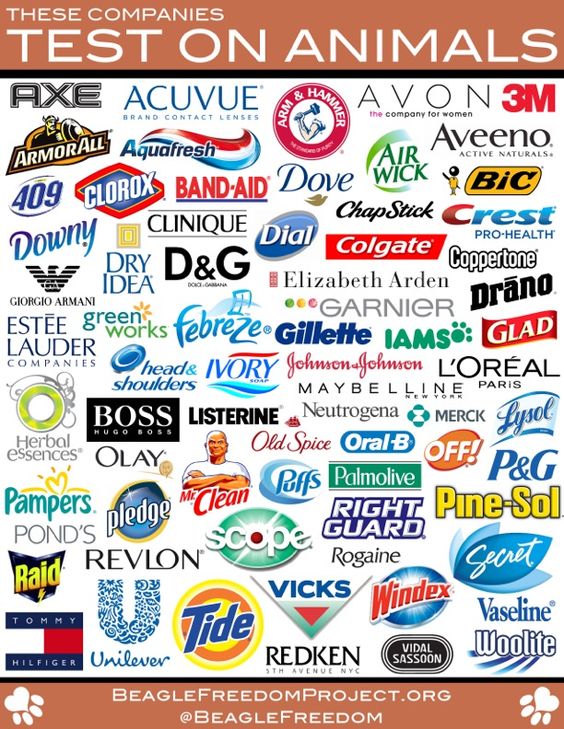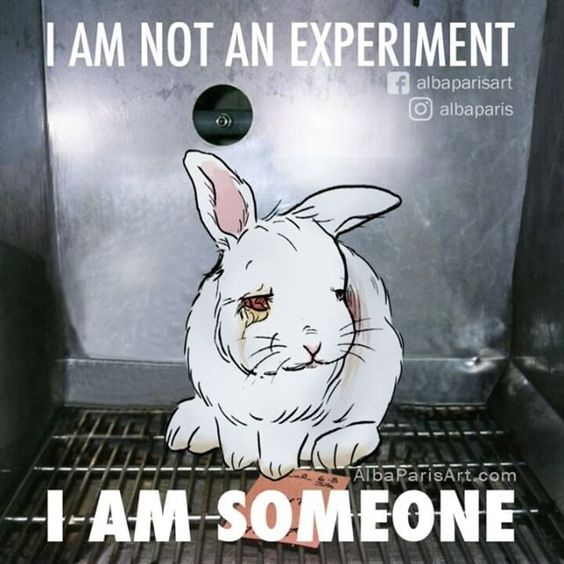Experimenting on animals for medical research is barbaric and inhumane. Countless animals are subjected to unimaginable savagery—including genetic modification, deliberate poisoning, drowning, and other forms of torture.
Animal testing practices raise many questions. Do the risks outweigh the rewards? Does technology involving alternatives to animal testing suffice? What do the facts regarding animal testing show? We will address the answers to these questions throughout the article.
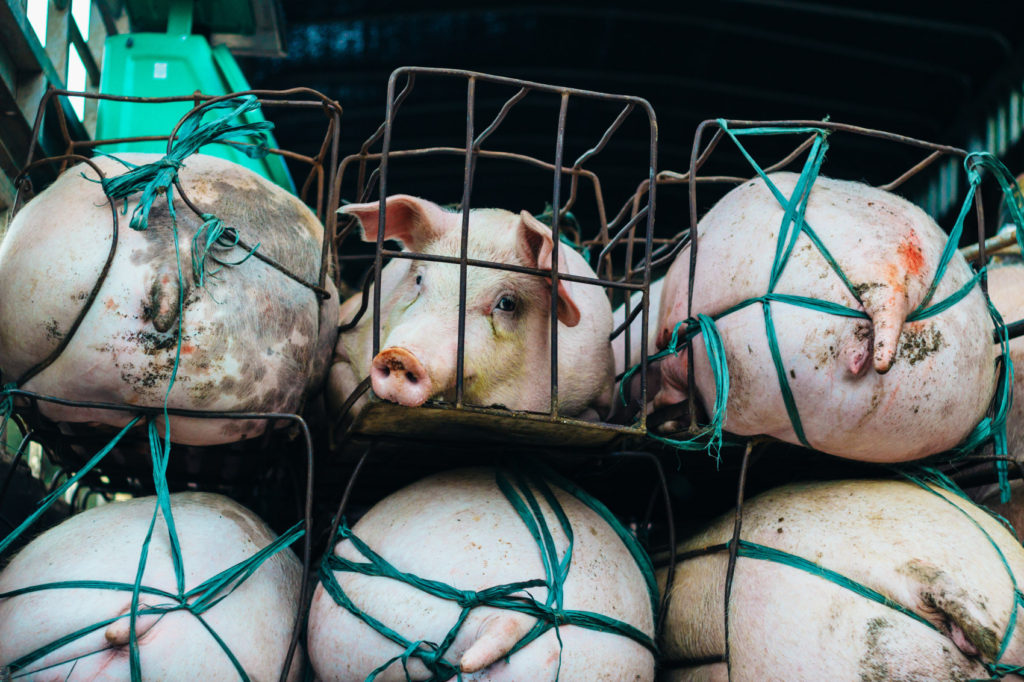
Animal testing, otherwise known as animal research or animal experimentation, is the use of animals for the purpose of research and development to ascertain the effectiveness or safety of substances. It is often mentioned in connection with cosmetics, toiletries, and drug testing. Animal testing is often required by government regulatory agencies to identify potential health hazards, and is widespread.
It is by no means recent practice, as details on animal testing can be found in Greek writings 400 years before our common era. Historical pillars such as Aristotle and Erasistratus were credited to have performed the first experiment using live animals and dissection has been practiced since.
In a time when technology and medical knowledge was limited, the practice of animal experimentation merits some consideration. But in an era like ours where technology reigns supreme (as in the development of animal testing alternatives), animal testing raises some familiar eyebrows especially from anti-animal cruelty organizations and even from the common populace.
There is a continuing debate regarding the topic, and the most common views are on the opposite ends of the spectrum. But what do animal testing facts really show?
Fact #1: Animal Testing Takes The Lives Of 100 Million Animals Annually
Make no mistake about it, company and university laboratories are no recreational parks for the animals involved in experimentation. According to a report by PETA (People for the Ethical Treatment of Animals), in the United States alone, as many as 100 million animals used for research are intentionally infected with disease, burned, poisoned, and eventually killed in laboratories. While awaiting their “turn,” animals are confined in cages, isolated, and experience unimaginable stress and abuse.
Fact #2: The Cold, Hard Truth: It’s A Lot Less Effective Than You’re Led To Believe
The number of lives lost is appalling, and these lives are wasted for nothing. In a report published in The Journal of the American Medical Association, scientists have found that the cures developed in laboratories rarely apply to humans. Even high-quality animal studies, the report continues, have zero guarantees of effectiveness on human subjects.
The former director of the National Cancer Institute Dr. Richard Klausner admitted, “We have cured mice of cancer for decades, and it simply didn’t work in humans.” Sadly, Dr. Klausner is not alone in this conclusion. Dr. Elias Zerhouni, a former director of the National Institute of Health, echoed the sentiment and encouraged researchers to “stop dancing around the problem” and to start developing new methods of research to better understand human diseases.
Considering the radically different biological makeup of humans and animals, it is baffling that animal testing is even instituted, especially by law.
Fact #3: Animal Testing In Cosmetics Is Already Banned In Europe
Someone has already done their homework with regards to animal testing in cosmetics and it’s a step in the right direction. The United Kingdom paved the way in 1998, and the rest of Europe followed some 15 years later.
While animal rights campaigners lamented the loopholes of the ban, it was still called “One of the most significant advances in animal welfare ever to come through the European Parliament” by consumer affairs specialist Phillip Whitehead.
Statistically, there are said to be around 38,000 animals killed in the development of cosmetics in the European Union every year. It is still not possible to fully replace animal testing methods when it comes to developing cosmetics. However, between the year 2007 to 2011, about 40 million euros were paid to the European Reference Laboratory for Alternative Methods to Animal Testing for work on finding alternatives.
It’s a welcome, human development, in light of ghastly cosmetic tests which include rubbing chemicals on the skin of shaved animals or dripping them into their eyes without any pain relief.
Fact #4: Animal Testing May Misguide Researchers Into Overlooking Potential Cures
If drugs tested on animals prove to be ineffective to humans, the opposite can also be the case. Some substances that are beneficial to humans can be ineffective or harmful to animals.
The result would be a misleading conclusion about the efficacy (or lack thereof) of a substance. One straightforward example of this circumstance is the effect of intravenous vitamin C. In her piece,”The University of Pittsburgh Is Using Taxpayer Dollars to Conduct Cruel and Unnecessary Animal Experiments,” Emily Trunell explains that intravenous vitamin C is has no effect when tested on mice, but has been proven effective in the treatment of sepsis on humans.
Similarly, fujimycin or Tacrolimus, a well-known immunosuppressive drug used to lower the risk of organ rejection by transplant patients, nearly faced rejected after failed animal tests. Conversely, the drug known as TGN1412 did not adversely affect animals during testing, but had life-threatening side effects on human subjects.
Fact #5: Animal Testing Is Not Economical
It’s heartbreaking that over 100 million animal casualties only led to the approval of 46 new medicines (according to the United States Food and Drug Administration). In fact, even with the billions spent by companies on drug research, the approval rate for new medicine has been the same since 1950. Only about 6% of the 4,300 companies involved have registered a new drug since that year.
Fact #6: It Is Dangerous And Could Even Be Fatal To Humans
Even if a new drug is approved at the expense of all these poor animals, it doesn’t mean that it’s going to work. We’re not talking about ineffectiveness per se, but of the potential side effects these drugs can bring.
Let’s take Vioxx, for example. The arthritis drug was supposedly successfully tested on monkeys, and was made available for general use. Shortly thereafter, it was taken off the market, as it was estimated to have caused 320,000 heart attacks and strokes and 140,000 deaths worldwide.
Fact #7: Animal Testing Needlessly Delays Life-Saving Or Life-Altering Procedures
Because of the need for animal testing, some procedures that could either bring relief or simply save lives are held back for decades! Because of the supposed “need” for animal experimentation, corneal transplants were delayed 90 years, the operation for ectopic pregnancies 40 years, and the polio vaccine another 40 years.
Fact #8: Rodents Don’t Get Carcinomas But Are Widely-Used In Cancer Research
About 95% of all laboratory animals used in research for respiratory problems, diabetes, and cancer are rodents. Testing mice and rats for cancer research makes little sense. Rodents do not develop carcinomas (the human form of cancer that affects membranes), only sarcoma, or cancer of the connective tissue.
Fact #9: Animal Testing Is Straight-Up Inhumane
It’s not enough to simply claim animal testing is cruel, but based on most common experiments carried out to test cosmetics, it’s hard to describe it any other way.
The dreaded Draize Eye Test, for instance, involves spraying a rabbit’s eye with shampoos, weed-killers, pesticides, and household detergents. No anesthesia is administered, and the torture goes on for 7 to 14 days. In that time, the eye is examined for signs of ulceration, hemorrhage, opacity, redness, swelling, discharge, and any other sort of injury. As you can well imagine, blindness as a result of these tests is commonplace.
Another one of these barbaric tests is known by the horrifying name Lethal Dose 50. In this test, animals are forced to ingest a substance (through whatever means necessary) until half of them die, hence the name 50, as in 50%.
If that’s not cruelty, we don’t know what is.
Fact #10: Cats And Dogs Also Suffer
Mice, rats, and other rodents may dominate the cosmetic testing arena, but domestic animals such as cats and dogs also suffer. These animals are often used in medical research in the areas of osteology, endocrinology, and cardiology.
In 2013, 67,772 dogs and 24,221 cats were used in such purposes in the United States. Beagles are the most commonly tested canines due to their docile nature.
Fact #11: The Botox Loophole Kills Hundreds Of Thousand Of Mice
The United Kingdom and all of the European Union has imposed a ban on the use of animals for cosmetic testing, but that doesn’t mean the continent is cruelty-free. Botulinum toxin (or Botox), the most powerful toxin currently known, is licensed for medical use, and animals continue to suffer as test subjects for the substance.
In 2008, 74,000 mice suffered and died in Botox tests for the French pharmaceutical company Ipsen, while 34,000 died for Merz Pharma during the same year. According to projections, 600,000 mice die each year for the three leading companies Allergan, Merz, and Ipsen alone.
What Are The Alternatives?
The concept of replacing animal experimentation with more humane techniques was conceived by William Russell and Rex Burch in their 1959 book The Principles of Humane Experimental Technique. While the methods mentioned by the authors lean more on the considerate treatment of animals (Replace, Reduce, Refine), technology allows researchers to develop more sophisticated techniques that may hopefully eradicate the need for animal testing.
- Microdosing: Involves human volunteers who receive very small doses of an experimental drug. Researchers would then “map” how the drug is metabolized in humans before producing it for commercial use
- Functional MRI: This also involves human volunteers but is non-invasive and generally considered safe. Functional MRI allows for the study of a human’s brain activity with a high level of accuracy.
- Computerized models and simulators: Lifelike human patient simulators are able to breathe, talk, and even die. Some can accurately simulate illnesses and injuries. The TraumaMan, for example, has now been used in 40 countries in advance medical training. The simulation mannequin has the parts of a human living torso and even skin and tissue layers, as well as ribs and internal organs.
- QSAR (Quantitative structure-activity relationships): QSAR is a regression model primarily used in the field of chemical and biological sciences. It can make intricate estimates of a substance’s likelihood of being hazardous, based on its similarity to existing substances and knowledge of human biology
- Organs-On-Chips: Created by Harvard’s Wyss Institute, Organs-on-Chips provides a high-tech alternative to animal testing. It contains human cells developed in a cutting-edge system that resembles the structure and function of human organs and organ systems.
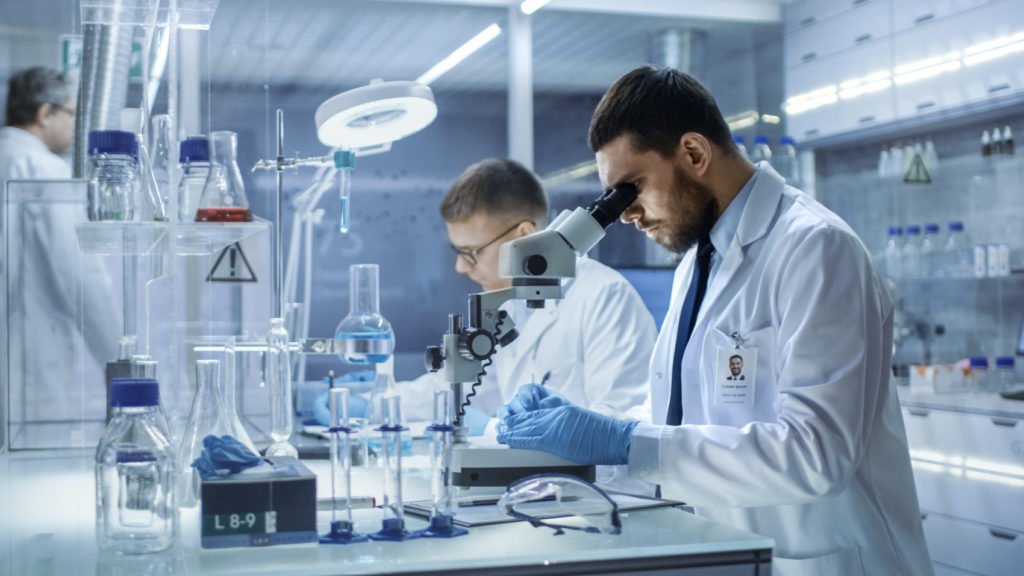
There Is No Need For Animal Testing In The Future
“The smaller, the less it suffers … no”
Science is a highly-progressive field. Often, advancements in technology mean one area of study must transition to other methods. Such should be the case for animal testing. It is arguably obsolete and the facts show that in many instances it is utterly pointless.
The laws that require animal testing may present a difficult challenge altogether for the parties that are against animal testing. However, the time has arrived to move on to cruelty-free research and leave behind old, inhumane methods. Remember, the ends do not always justify the means, especially if said “means” involve brutal treatment of living creatures.


